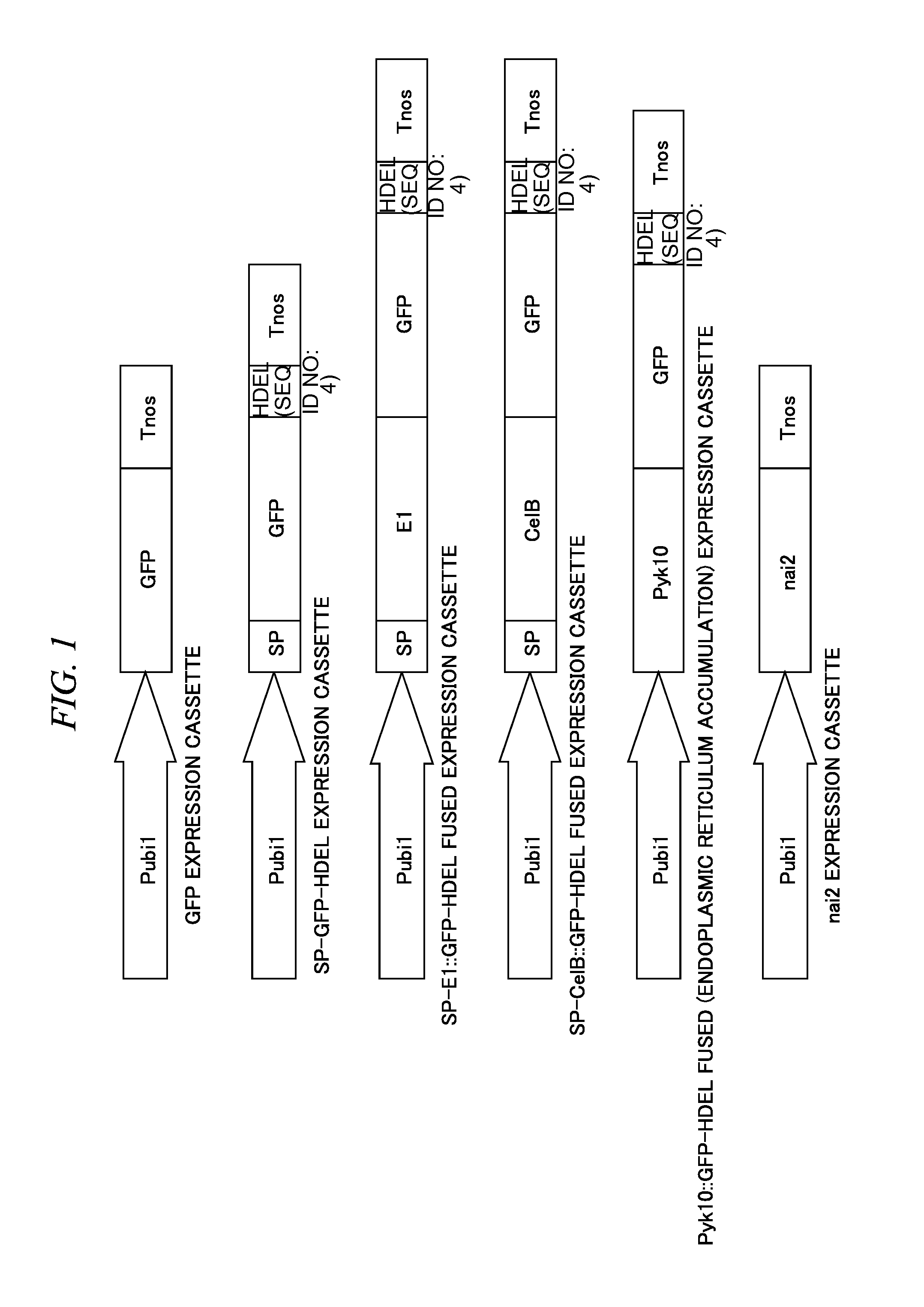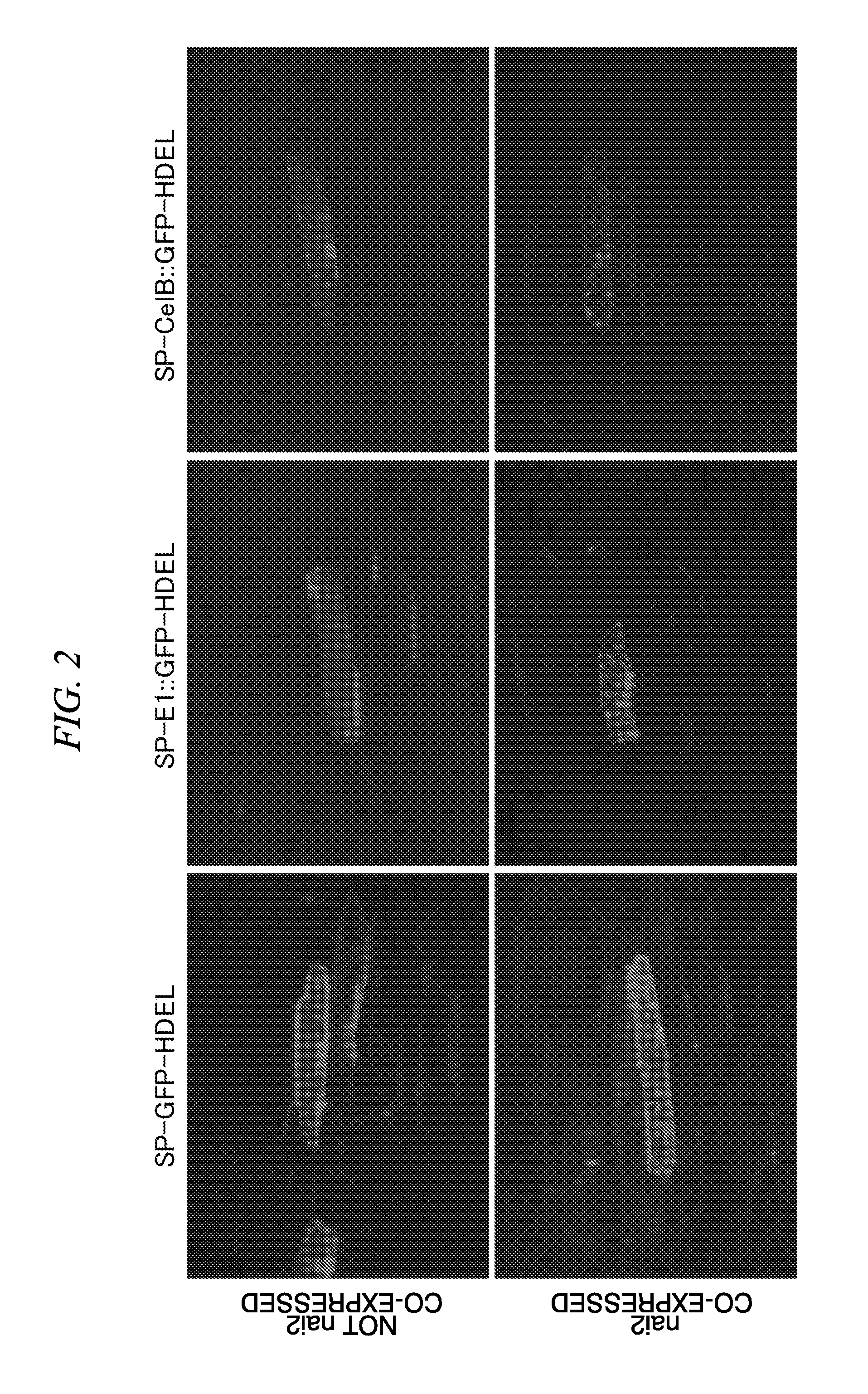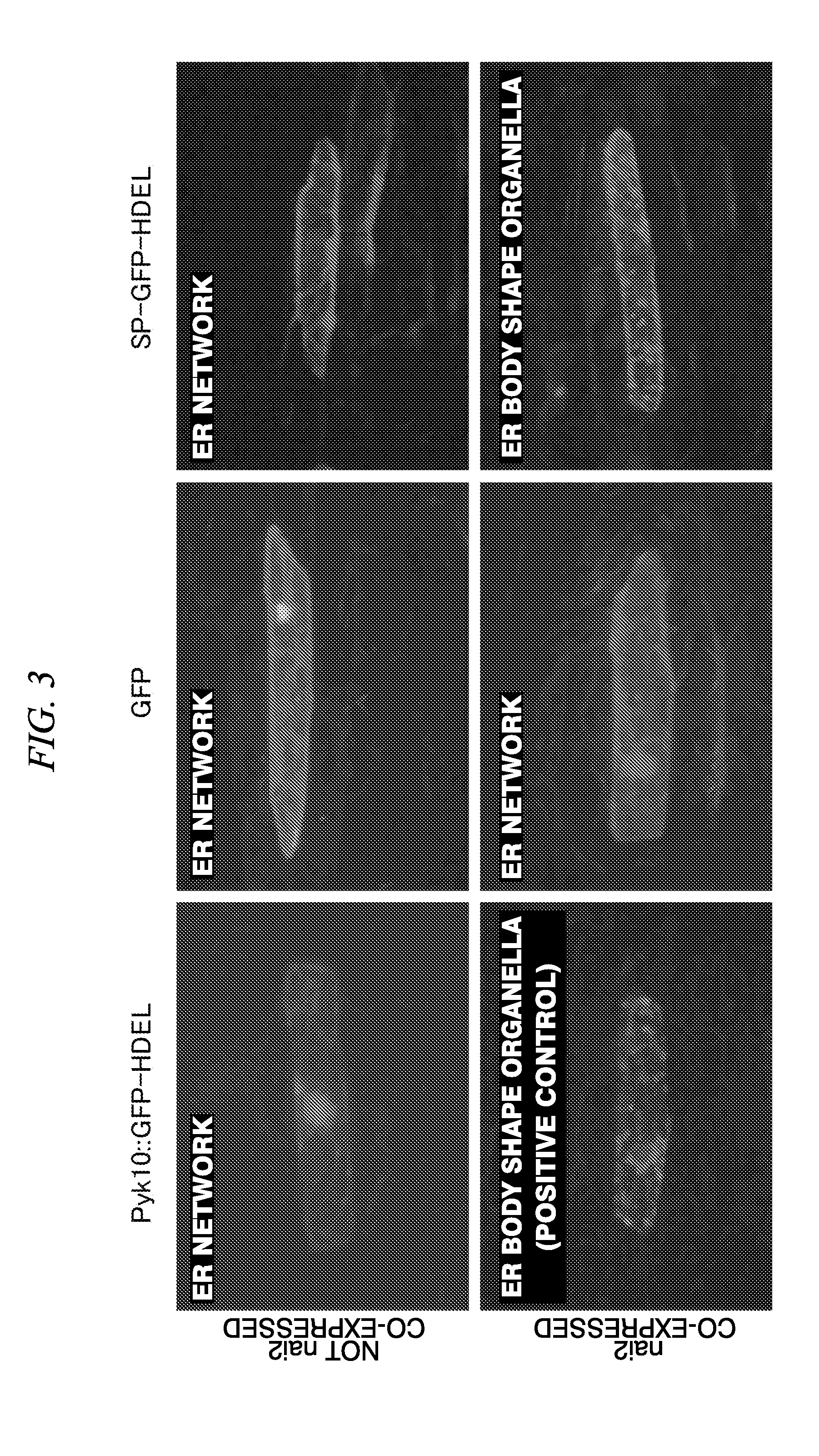Method For Accumulating A Protein In Plant Cell
a plant cell and protein technology, applied in the field of plant cell protein accumulation, can solve the problems of various physiological and morphological abnormalities, adverse effects of accumulating subcellular protein, etc., and achieve the effect of reducing the effect of overexpression on the plant cell and the plant individual, and stably accumulating
- Summary
- Abstract
- Description
- Claims
- Application Information
AI Technical Summary
Benefits of technology
Problems solved by technology
Method used
Image
Examples
example 1
[0087]By temporarily co-expressing an nai2 gene and a gene which encodes a target protein in onion epidermal cell, the target protein was accumulated in an ER body which was newly formed.
[0088]
[0089]Corn ubi1 promoter and Agrobacterium nos terminator were ligated with only a Aequorea victoria green fluorescent protein (GFP) gene which is a reporter, or with a Aequorea victoria green fluorescent protein (GFP) gene fused with Acidothermus cellulolyticus derived endoglucanase E1 gene catalytic domain (E1-cat) which is a diastatic enzyme (refer to Non-Patent Literature 15) or Pyrococcus furiosus derived β-glucosidase CelB gene (refer to Non-Patent Literature 16), as a fused protein, by a PCR method, and thus a gene expression cassette was prepared.
[0090]Tobacco mosaic virus Pr1a protein signal peptide (refer to Non-Patent Literature 10) was added at the code region 5′ terminal, and 4 amino acid residues (HDEL) which is an ER retention signal peptide was added at the code region 3′ termi...
example 2
[0099]A protein fused with another polypeptide at the C-terminus of Pyk10 protein was set as a target protein, and by the method for accumulating a protein in a plant cell of the present invention, a target protein was accumulated by forming an ER body, in onion epidermal cells.
[0100]
[0101]A fusion protein to which the GFP is ligated at the C-terminus of Pyk10, corn ubi1 promoter, and Agrobacterium nos terminator were ligated by a PCR method, thereby preparing a gene expression cassette. In the code region 3′ terminal of the gene, 4 amino acid residues (HDEL) which is an ER retention signal peptide was added. Moreover, as the above-described, an endomembrane system migration signal peptide was originally provided at the N-terminus of Pyk10. FIG. 1 is a schematic diagram of an expression cassette prepared (Pyk10::GFP-HDEL fused expression cassette).
[0102]By inserting Pyk10::GFP-HDEL fused expression cassettes in a MultiRound Gateway (refer to Non-Patent Literature 11) entry vector us...
PUM
| Property | Measurement | Unit |
|---|---|---|
| Fraction | aaaaa | aaaaa |
Abstract
Description
Claims
Application Information
 Login to View More
Login to View More - R&D
- Intellectual Property
- Life Sciences
- Materials
- Tech Scout
- Unparalleled Data Quality
- Higher Quality Content
- 60% Fewer Hallucinations
Browse by: Latest US Patents, China's latest patents, Technical Efficacy Thesaurus, Application Domain, Technology Topic, Popular Technical Reports.
© 2025 PatSnap. All rights reserved.Legal|Privacy policy|Modern Slavery Act Transparency Statement|Sitemap|About US| Contact US: help@patsnap.com



